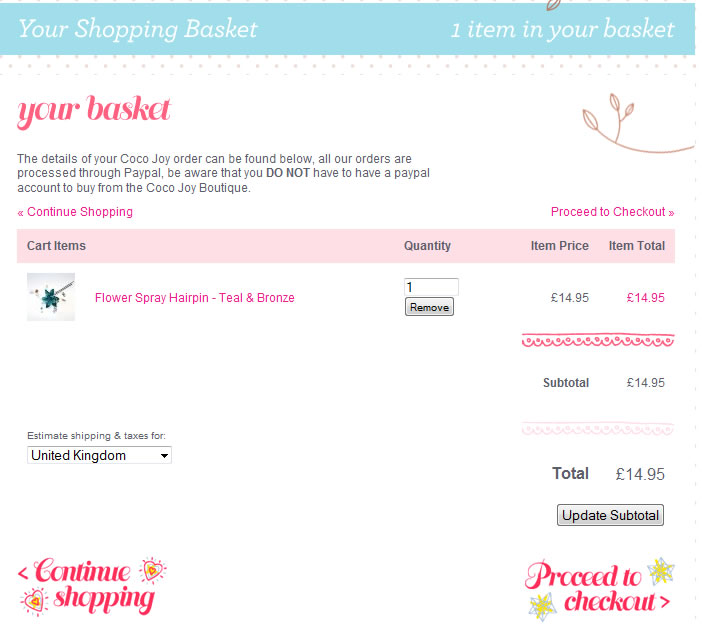It’s a tough question. It’s a tough proposition – you’ve got a client on the phone, they want to start uploading products yesterday, you know you’re onto a winner with WordPress as their CMS but which of the myriad e-commerce plugins do you choose?
Well let me take you on a little journey…
What E-Commerce Plugins Are Out There?
Loads, frankly. More than I have time to write about here today. So, in alphabetical order no less, here are 6 contenders and a little bit about each of them:

eShop (available here)
Once installed will give you shopping cart functionality to any Page in WordPress, lots of payment options and allows product options.
Quick Shop (available here)
Adds a nice sidebar cart widget and a button to TinyMCE to add products to posts/pages. Simple, minimal & PayPal compatible.
Shopp (available here)
Once you’ve flicked the switch you’ll have access to more features than I’m able to list in this tiny intro. Shopp offers a great deal of customisation to practically every aspect of the shopping experience but you’ll pay for the privilege with prices starting from $55.
WP e-Commerce (available here)
A seriously popular shop plugin, WP e-Commerce claims to be the ‘best’ out there and in terms of bells and whistles this is certainly hard to argue with. Some of the additional features of this plugin are premium, so you’ll have to reach into your pocket before you can see them on your website.
WordPress Simple PayPal Shopping Cart (available here)
Comes with a cart which can be added to by clicking an “Add to Cart” PayPal button on posts and pages. You can add options to products but primarily it adds the “Add to Cart” button.
YAK for WordPress (available here)
Another no frills, really simple plugin which allows you to associates products with posts or pages as well as offering categorisation and of course various payment methods.
And the Best E-Commerce Plugin Is…
Ah, I knew you were going to ask that. I’m going to have to put my cards on the table and say that when it came to the crunch I didn’t have time to investigate all of them. Who does when you’ve got a deadline to meet? So instead I weighed up the pros and cons of these plugins from their respective write-ups and finally narrowed the choice down to 2 finalists.
WP e-Commerce and Shopp
Unfortunately, in every battle there is a winner and a loser. WP e-Commerce looked really good. I even installed it and it functioned really well but the problem was that there seemed to be too many premium upgrades relating to the core functionality my client had asked for. And so, regrettably, and even though it was a truly exceptional plugin, I dismissed WP e-Commerce and move on to the winner of this imaginary bout:
Shopp
Yes, it’s a premium plugin but what appealed to me was that it had everything I needed, everything that myself and my client considered to be at the core of a great online store and everything would work straight out of the box.
To my utter amazement that was exactly what happened and I instantly had the framework for an e-commerce website live and ready to go.
Since then I have become something of a convert to the Shopp plugin. It’s easy to set up, easy to administer, the documentation on the website is not just comprehensive but it actually make sense and it useful… Of course all of that is good but there is icing on this particular cake in the form of theme templates which allow you to customise the look and functionality of 99% of the customer facing aspects of the shop.
And that last 1%?
Just write your own code, drop it in your own templates and you’ll have that covered too.
What can you do with it?

The last website I built with this plugin was for Coco Joy Boutique who sell handmade jewellery, bridal accessories and monsters (yes, monsters) and this serves as quite a nice little showcase for what is possible using Shopp. With it I have used some of the core functionality that you would usually expect to see like categories, carts, products, images, etc. but the custom design used on the site I think would have challenged some of the lesser plugins.
With Shopp it was just a case of getting in there, digging in and coding up a solution.
And finally…
So that was my experience of falling for an e-commerce plugin but what’s yours? Was I wrong? Do my affections belong elsewhere? We’d love to hear your thoughts on the shop plugins mentioned here (or any others for that matter) in the comments area below:
When not working with The Blog House, Adam’s alter ego beckons as he dons cape and mask as one of the Superhighwaymen.

Don’t forget PHPurchase!
(added link: http://www.phpurchase.com/)
Thanks for the recommendation Alex.
Can I ask you to summarise why it’s so good / worth considering?